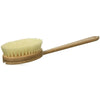Centella Asiatica: The Multifaceted Herb for Skin, Mind, and Body

Centella asiatica, commonly known as Gotu kola, is a revered herb in traditional medicine systems like Ayurveda and Traditional Chinese Medicine. This small, green plant is celebrated for its diverse therapeutic benefits, ranging from enhancing cognitive function to promoting skin health and wound healing. Modern scientific research continues to validate these traditional uses, highlighting Centella asiatica's potential as a versatile natural remedy.
What Is Centella Asiatica?
Centella asiatica is a creeping herb native to tropical and subtropical regions of Asia, Africa, and the Pacific Islands. Its leaves are rich in bioactive compounds, particularly triterpenoids like asiaticoside, madecassoside, asiatic acid, and madecassic acid. These compounds are primarily responsible for the herb's pharmacological activities, including neuroprotective, anti-inflammatory, and wound-healing effects.
Cognitive and Neurological Benefits
Centella asiatica has been traditionally used to enhance memory and cognitive function. Recent studies support these claims, demonstrating that the herb's compounds can improve cognitive performance and protect against neurodegenerative diseases. For instance, asiaticoside has shown promise in protecting against oxidative stress-induced neuronal damage.
Skin Health and Wound Healing
One of the most well-documented uses of Centella asiatica is in promoting skin health and accelerating wound healing. Topical application of Centella extracts has been shown to stimulate collagen production, enhance wound contraction, and improve tensile strength of the skin. These effects are attributed to the triterpenoids, which also possess anti-inflammatory and antioxidant properties.
Methods of Consumption
Centella asiatica can be consumed or applied in various forms, depending on the desired effect:
-
Tea: Steeping dried Centella leaves in hot water creates a soothing herbal tea known for its calming properties.
-
Capsules/Tablets: Standardized extracts in pill form offer a convenient way to incorporate Centella into daily routines.
-
Topical Creams and Ointments: Applied directly to the skin, these products are formulated to aid in wound healing and improve skin elasticity.
-
Smoothies or Fresh Leaves: In some cultures, fresh Centella leaves are consumed raw or blended into smoothies for their purported health benefits.
- Making a Bath: Soaking fresh or dried leaves in a bath is another relaxing way to feel some of the benefits of this and many other herbs.
Scientific Evidence Supporting Centella Asiatica
-
Wound Healing: A comprehensive review highlighted that Centella asiatica accelerates wound healing by promoting collagen synthesis and enhancing tissue regeneration.
-
Neuroprotective Effects: Research indicates that asiaticoside, a major active constituent of Centella asiatica, exhibits neuroprotective properties, potentially aiding in the management of neurodegenerative disorders.
-
Anti-Inflammatory Properties: Studies have demonstrated that Centella asiatica possesses anti-inflammatory effects, which may contribute to its efficacy in treating various skin conditions.
-
Cognitive Enhancement: A study found that consumption of a smoothie containing Centella asiatica improved alertness and contentedness, suggesting potential cognitive benefits.
-
Antioxidant Activity: Centella asiatica exhibits antioxidant properties, which may play a role in its therapeutic effects on skin health and aging.
Considerations and Side Effects
While Centella asiatica is generally considered safe for most individuals, it is important to be aware of potential side effects and interactions. Some people may experience allergic reactions, and the herb may interact with certain medications. As with any supplement or herbal remedy, it is advisable to consult with a healthcare professional before starting Centella asiatica, especially for individuals with existing health conditions or those taking prescription medications.
References
Gohil, K. J., Patel, J. A., & Gajjar, A. K. (2010). Pharmacological review on Centella asiatica: A potential herbal cure-all. Indian Journal of Pharmaceutical Sciences, 72(5), 546-556. Link
He, Z., et al. (2023). A review of pharmacokinetic and pharmacological properties of asiaticoside, a major active constituent of Centella asiatica (L.) Urb. Journal of Ethnopharmacology, 302, 115865. Link
Sun, B., et al. (2020). Therapeutic potential of Centella asiatica and its triterpenes: A review. Frontiers in Pharmacology, 11, 568032. Link
Witkowska, K., et al. (2024). Topical application of Centella asiatica in wound healing: Recent insights. Pharmaceutics, 16(10), 1252. Link
-
Lawal, O. M., et al. (2021). Consumption of fresh Centella asiatica improves short term alertness and contentedness. Journal of Herbal Medicine, 25, 100396. Link
Centella asiatica stands as a testament to the enduring wisdom of traditional medicine, with modern science continually uncovering its multifaceted benefits. Whether used for enhancing cognitive function, promoting skin health, or supporting wound healing, this humble herb offers a natural avenue for holistic well-being.

October 19, 2025
Glyphosate: What You Need to Know About the World’s Most-Used Herbicide
By Erin Biberston, Board-Certified Holistic Health Coach What Is Glyphosate? Glyphosate, the active ingredient in Roundup, is the most widely used herbicide on Earth. Farmers spray it not only to kill weeds, but also to dry out wheat,...
Read more
October 19, 2025
Why Some Should Avoid Methylated Supplements
Methylation is a fundamental biochemical process that impacts many aspects of our health, from gene expression to the metabolism of nutrients and neurotransmitters. However, certain genetic variations can disrupt normal methylation, mak...
Read more
October 19, 2025
How To Boost Your Body's Natural Anti-Cancer Defense by Activating NK Cells
Natural Killer (NK) cells are the unsung heroes of our immune system—specialized white blood cells that patrol our bodies, identifying and eliminating cancer cells and virus-infected cells without prior sensitization. Unlike other immun...
Read more




Leave a comment